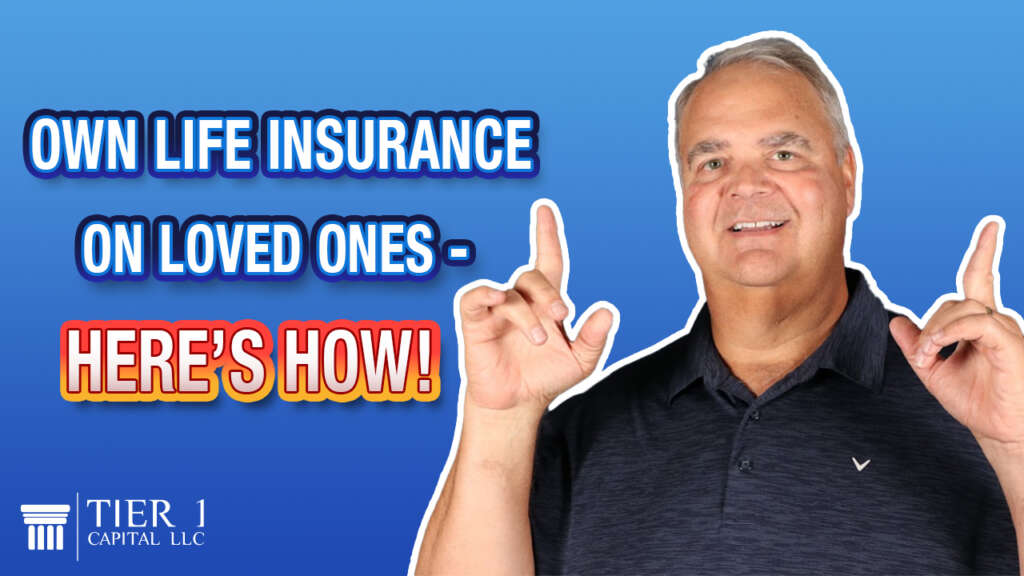
You may or may not realize that you’re able to insure not only your own life, but also the lives of others, under certain conditions. And that’s exactly what we’re going to talk about today—how to buy a policy on someone else’s life.
Now, in most cases, when you purchase a life insurance policy, you’re both the owner and the insured. This means your own life is covered, so the death benefit will be paid out when you pass away. As the owner, you control everything: you pay the premiums, can change the beneficiary, and access benefits like the cash value. But sometimes, it might make sense to purchase a policy on someone else’s life, especially if you’re uninsurable or would suffer a financial loss if that person dies. In that case, you’d be the owner of the policy and have access to those benefits, including the cash value.
Think of it this way: maybe you want a life insurance policy but aren’t insurable yourself. That’s where the insurance industry provides the option to purchase a policy on anyone with whom you have an insurable interest. So, what is an insurable interest? Basically, it means you would suffer some financial loss if that person passes away.
Let’s talk about who might qualify as someone with an insurable interest. This could include your spouse, your child, a co-signer on a loan where you’d be responsible for paying the loan if they die, a parent you rely on financially, or even a business partner. There are other options as well, like a key person in your company or a partner in a real estate venture. We’ve even worked with people who co-own assets like an airplane together. In that case, if something were to happen to one partner, the other partner would want to ensure the deceased partner’s share of the asset was taken care of, so they purchase insurance on each other.
Even if you have a roommate who helps with expenses, their passing could create a financial loss for you. But regardless of the situation, when you want to purchase life insurance on someone else’s life, the agent will need to explain to the insurance company what the financial loss would be if that person dies. Once this is established, the underwriting process is quite similar to a standard policy. The majority of underwriting will be based on the insured person’s life, as the insurance company is assessing their risk. So, the insured person would need to complete the application, possibly undergo a physical if required, release medical records to the insurer, and sign the necessary delivery documents. But from there, it’s straightforward—the policy then lies entirely in the owner’s hands.
Here’s a key point to remember: the insurable interest only has to exist at the time of application. For example, if two business partners apply for insurance on each other, and later down the road they sell the business, they can still keep those policies because the insurable interest was verified only at the time of application. This is a big contrast with property insurance, where the insurable interest must exist throughout the policy.
At the time of delivery, the insured signs off on the policy, giving the owner complete control. The owner will have that control throughout the insured’s life and, ultimately, the death benefit will be paid to the owner or to a beneficiary designated by the owner.
This approach can also be a solution if you’re uninsurable and want to implement the infinite banking concept. Simply find someone with whom you have an insurable interest, purchase a policy on them, and you’ll control the cash value. Then you can borrow against it and take advantage of all the benefits that infinite banking provides.
It’s interesting to note that when people are considering buying policies on others, they often think about insuring the youngest person possible to gain the longest growth period. However, if you’re looking for liquidity in the near term, you might want to think about insuring someone closer to your own age, or even older, if budget allows. When that person eventually passes, you’ll receive a guaranteed sum of money, along with access to the cash value in the meantime.
If you’d like to learn more about this strategy and how it could work in your life, visit our website at tier1capital.com to schedule a free strategy session or download our free business owners guide. We’d be happy to discuss your unique situation and help you make the most of it.
Remember, it’s not about how much money you make—it’s about how much you keep that truly matters.
